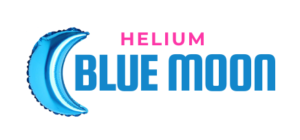NB-IoT Chipset Market
The NB-IoT (Narrowband Internet of Things) chipset market is set to experience remarkable growth, with estimates suggesting an increase from USD 861.7 million in 2024 to USD 4,785.1 million by 2033, reflecting a compound annual growth rate (CAGR) of 21.0% during this period. This surge is primarily driven by the rising use of IoT-enabled smart solutions across various sectors including smart cities, agriculture, energy, healthcare, and logistics. Renowned for its low energy consumption and extensive coverage, NB-IoT technology is particularly suited for securely and efficiently connecting a large volume of low-data devices.
Market Segmentation
The NB-IoT chipset market is differentiated based on deployment type, device category, and application. Deployment modes are classified into guard band, standalone, and in-band. Among these, in-band deployment is gaining traction due to its alignment with existing LTE spectrums, which minimizes infrastructure expansion costs. Conversely, standalone deployments are increasingly favored in rural and low-connectivity regions as they operate independently of cellular infrastructure. In terms of applications, the market includes smart meters, smart parking, wearable technology, smart agriculture, asset tracking, alarms, and detectors. Smart meters and asset tracking applications lead in volume due to their extensive deployment requirements across utilities and supply chains, necessitating reliable, low-power connectivity that NB-IoT provides effectively.
Regional Insights
The Asia Pacific region stands as the largest and fastest-growing market for NB-IoT chipsets, with China taking the lead in global deployments. This region’s position is bolstered by competitive pricing of modules, substantial government backing for smart city initiatives, and a high concentration of chipset manufacturers. Following closely, North America and Europe are also expanding their NB-IoT capabilities, focusing on industrial IoT and connected healthcare. In these areas, telecom operators are enhancing NB-IoT implementations to bolster automated systems in smart manufacturing, utility management, and eldercare monitoring.
Market Drivers
A primary driver propelling the NB-IoT chipset market is the increasing demand for low-power, wide-area networks (LPWANs) capable of supporting massive machine-type communications (mMTC). NB-IoT technology facilitates stable and secure connections for billions of devices that transmit small amounts of data, making it ideal for applications such as smart metering, smart lighting, environmental monitoring, and industrial automation. Additionally, the rise of smart cities, particularly in developing regions, is a significant factor as municipalities seek to utilize NB-IoT for systems like waste management, smart parking, traffic monitoring, and public utility optimization, all of which depend on reliable communication and long-lasting battery life.
Market Restraints
Despite its strong growth prospects, the NB-IoT chipset market encounters several challenges. A significant barrier is the compatibility with older systems, particularly in regions still operating on legacy communication technologies. Upgrading existing infrastructure can be both costly and time-consuming for telecom operators and service providers. Furthermore, competition from alternative LPWAN technologies like LoRa and Sigfox, which also provide low-power and long-range advantages, poses a challenge. In certain regions, these alternatives may be favored due to existing network investments or lower operational expenses, thereby hindering the adoption of NB-IoT.
Market Opportunities
The expanding landscape of connected devices and machine-to-machine (M2M) communication offers significant growth prospects for NB-IoT chipsets. The connected healthcare sector, which requires continuous patient monitoring through wearable and implantable devices, is a promising area where NB-IoT’s low power consumption, extensive coverage, and robust security features are particularly beneficial. In agriculture, the adoption of smart irrigation, soil monitoring, and livestock tracking is on the rise. Farmers in remote areas can leverage NB-IoT’s capacity to transmit data over vast distances, even with limited network infrastructure, enhancing agricultural productivity and resource management.
Frequently Asked Questions (FAQs)
➤How large is the NB-IoT Chipset Market? ➤What growth rate is projected for the NB-IoT Chipset Market? ➤Who are the leading players in the Global NB-IoT Chipset Market? ➤What is the market forecast for 2032? ➤Which region is expected to dominate the NB-IoT Chipset Industry throughout the forecast period?
Key Players
✦Qualcomm Technologies Inc. ✦MediaTek Inc. ✦Huawei Technologies Co., Ltd. ✦Nordic Semiconductor ASA ✦Altair Semiconductor (Sony Group) ✦Sequans Communications ✦u-blox Holding AG ✦Samsung Electronics Co., Ltd. ✦Intel Corporation ✦ZTE Corporation ■Recently, Huawei has collaborated with major telecom operators in Asia to implement advanced NB-IoT chipset solutions for smart grid applications. ■MediaTek introduced a new line of energy-efficient NB-IoT chipsets designed specifically for wearable devices and asset tracking systems.
Final Thoughts
The NB-IoT chipset market is undergoing a significant transformation, propelled by the global IoT movement and the pressing need for efficient communication among billions of low-data devices. From urban smart grids to rural agricultural applications, the functionalities of NB-IoT position it as a fundamental component of the connected future. With ongoing technological advancements and supportive policy environments shaping the market, stakeholders in the telecom, manufacturing, and utilities sectors are making considerable investments in NB-IoT innovations. As 2033 approaches, companies that adapt to the evolving demands for smart connectivity, emphasize energy efficiency, and take advantage of regional growth trends will likely emerge as leaders in this dynamic ecosystem.

